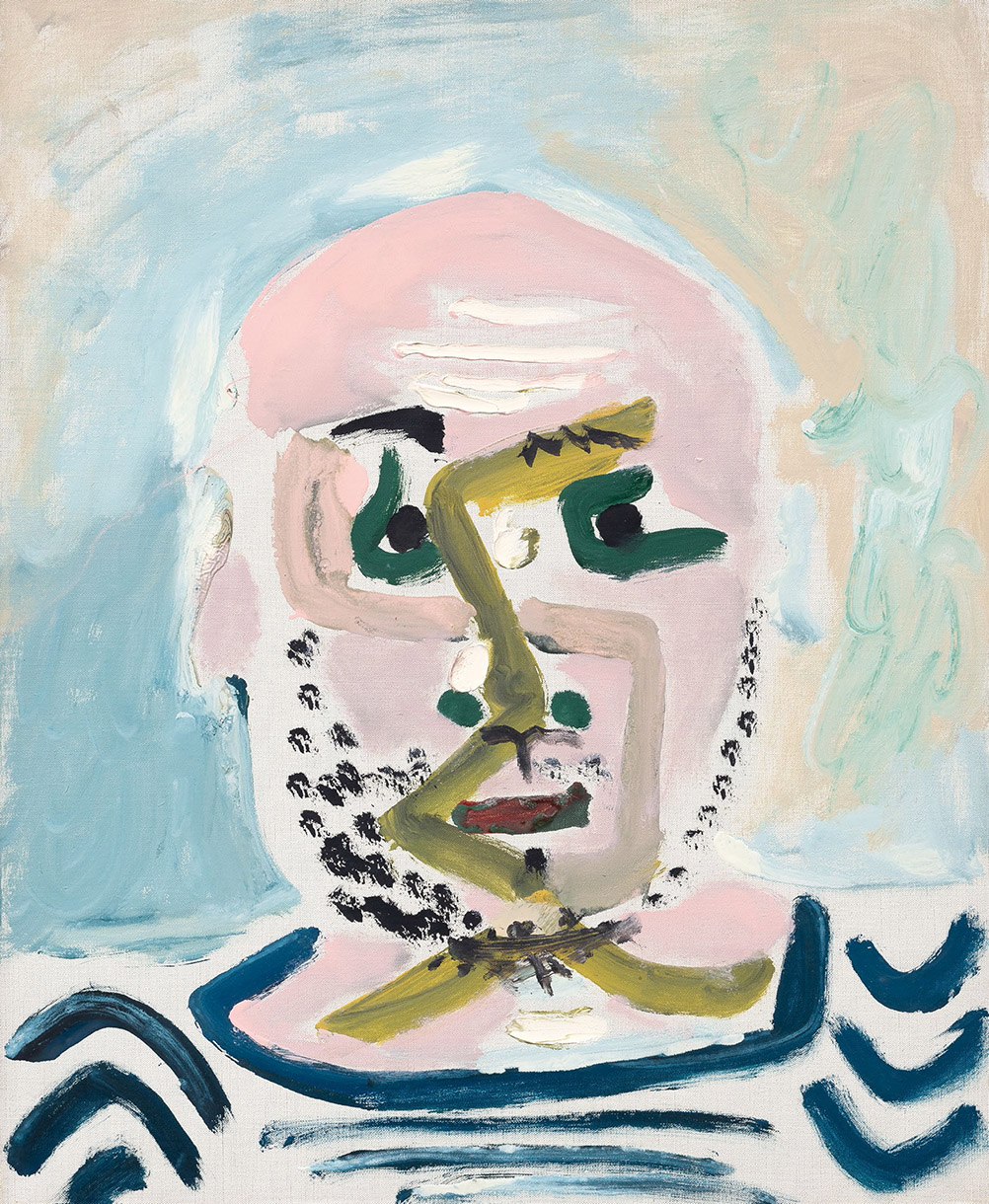
Pablo Picasso, Buste d’homme (Bust of a Man), Mougins, 15 May 1965 (II). Fundación Almine y Bernard Ruiz-Picasso. © Succession Picasso/Bildupphovsrätt 2025. Photo: Hugard & Vanoverschelde © FABA
Bust of a Man, 1965
Pablo Picasso
Runtime: 01:27
Narrator: In the mid-1960s, Picasso painted a series of powerful male heads. Their sharply defined features and intense gazes have often been interpreted as self-referential. A clear indication is the blue-and-white striped Breton shirt – the traditional sailor’s jersey that Picasso wore almost daily. It became a familiar part of his public image and, in the paintings, functions as a recognisable attribute.
Here, the colours meet in broad, emphatic brushstrokes. Picasso used both oil paint and so-called modified oil – traditional oil paint mixed with binders to change its consistency, drying time and sheen. During the 1960s he frequently experimented with industrial paints, especially Ripolin, a commercial oil-based enamel, which he combined with artists’ oils, resins, varnishes and sometimes linoxin, an oxidised linseed oil. These thick, fast-drying paints allowed him to work rapidly and spontaneously, often on several canvases at once.
Picasso sometimes worked over earlier compositions, repainting canvases from the same day or week. Technical analyses show that several male heads from this time contain underlying compositions, sometimes rotated or in entirely different colours.
In this painting, everything is focused on the very conditions of image-making. The work reveals how Picasso combined rapid gesture with technical experimentation in his ongoing exploration of the human face.